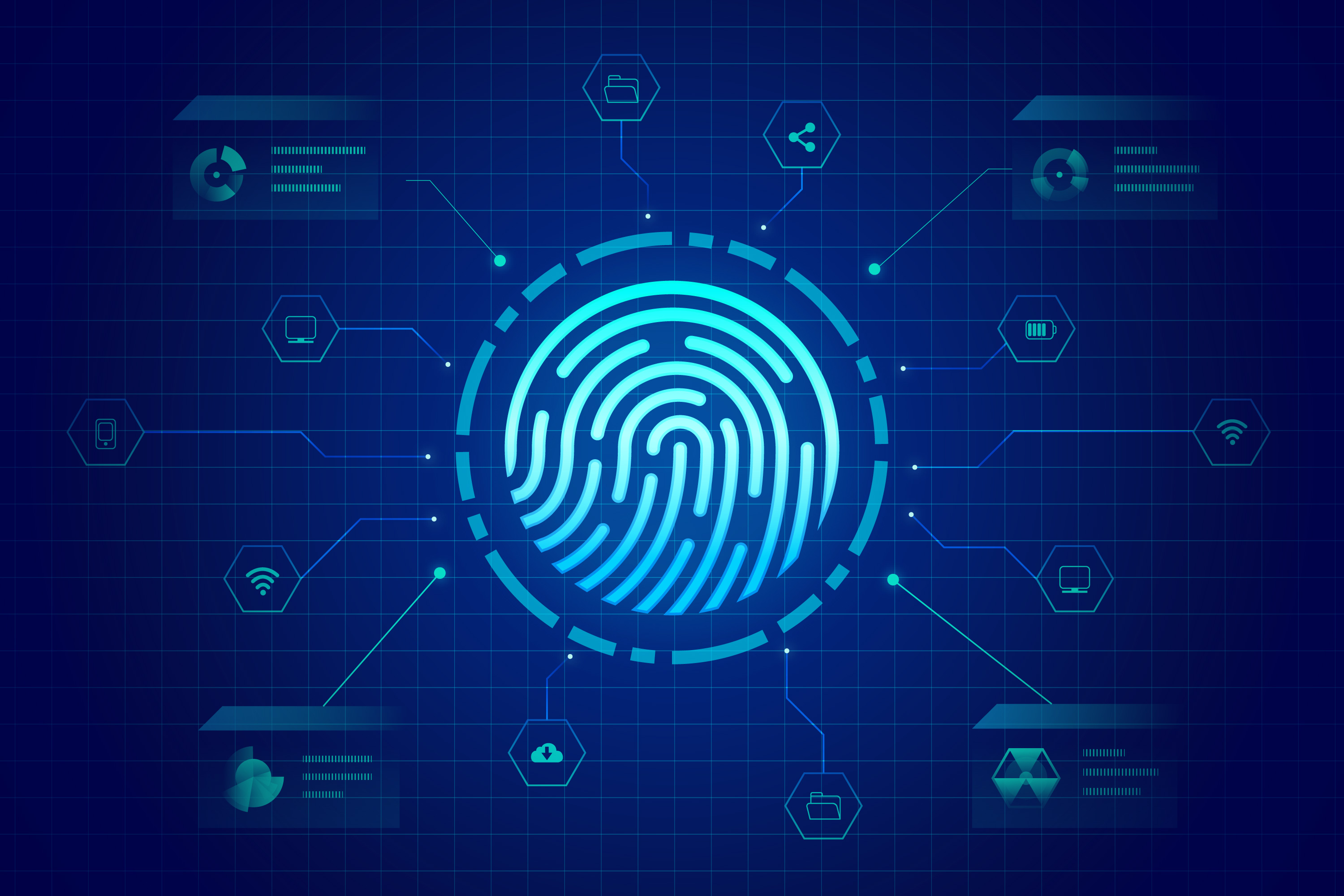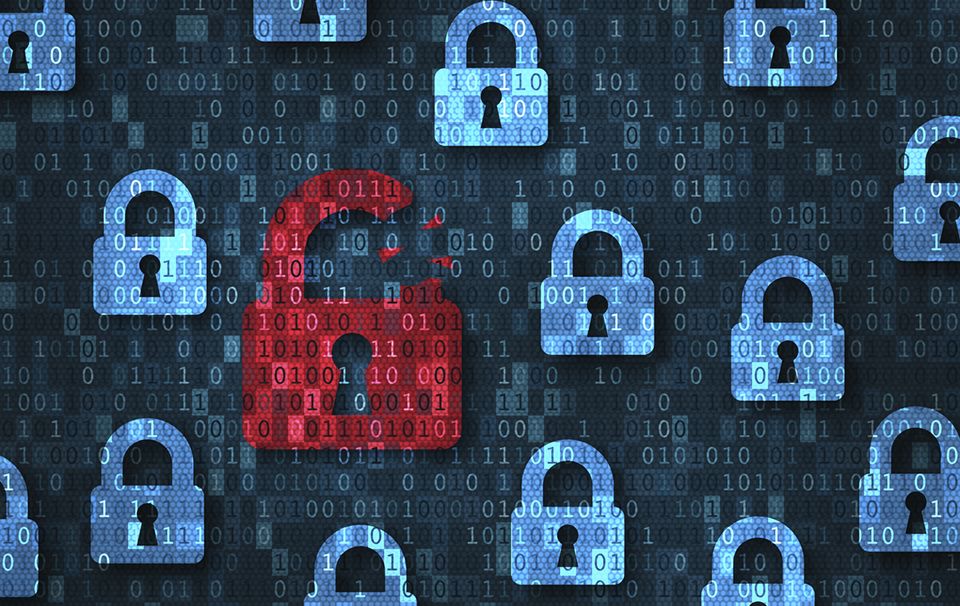
por Rebeca | Feb 10, 2022 | Ciberseguridad, Noticias, Soffid

A convergent approach to enterprise security
Globalization, easy access to information, exponential growth of immigration and society diversity, worldwide political and cultural conflicts, all these phenomenons have impacted the threat paradigm of security that has also been immutably changed by domestic and foreign terrorism, and it is important a convergent approach to enterprise security.
Everywhere you go, organizations are in the middle of some sort of transformation. Whether it’s modernizing the platforms that have been there forever, trying to launch a data center in the cloud, or trying to manage manufacturing or IoT devices more efficiently, the size and shape of our digital footprint is changing. We no longer just have a “digital network”, or “digital services”, we now have an entire “digital ecosystem” and even that keeps expanding.
There’s no denying that we’re living in a time where the cybersecurity threat landscape is increasingly dynamic and complex. The landscape includes cloud-native environments, Infrastructure-as-Code (IaC), containers, secrets management, remote work
These new technologies and practices
Logically require security tooling to help address potential vulnerabilities and respond to threats and incidents when they do occur. However, there is a cost associated with the increased tool introduction and use.
Using multiple security applications results in identity sprawl. When a company uses siloed systems to manage its security risks without synchronizing them all, it creates a different identity for each application user. Few applications do not connect with the central server, forcing organizations to manage multiple identities.
Many organizations using cloud services have to suffer through various identity management. Organizations need to resolve identity sprawl issues to strengthen their cybersecurity and maximize security alerts. As every identity requires different credentials and passwords, it is impossible to keep track of them. Therefore, companies use the same passwords and account credentials for every application, pushing them to credential-stuffing.
If a company’s one application is targeted and breached, the attackers will gain access to the rest of the security applications and then sell this information on the dark web. From here, threats snowball, leaving the organization vulnerable to considerable brute force and hybrid attacks.
But how to have a convergent approach to enterprise security?
Product sprawl wastes many resources as the IT teams have to work overboard in software maintenance and individually train every employee to use all security products. It also wastes valuable time finding, opening, navigating, obtaining vital information, and switching between multiple products.
Product sprawl negatively affects individual and team productivity. When the teams have to operate numerous applications, it reduces the opportunity to work together and stay on the same page. Moreover, the transition from existing tools also becomes impossible as it requires training sessions to get them up to speed with every software.
What about Convergence?
We can define Convergence as the identification of security risks and interdependencies between business functions and processes within the Enterprise, and the consequential development of managed business process solutions to address those risks and interdependencies. This definition captures a significant shift from the emphasis on security as a purely functional activity, to security as an “added-value” to the overall mission of business. This is an
t starting point because it essentially changes the way the concept of security is positioned within the enterprise.
Future and approach to enterprise security
Managing the successful convergence of information and operational technology is central to protecting your business and achieving crucial competitive advantage
Identity Governance and Administration is– and to have effective security must be– that common meeting point of many different security disciplines.
To efficiently and effectively draw the security perimeter, it makes more sense to have a single, holistic view of organizational identities where you can determine policy, view posture, enact compliance, and respond to risk.
GRC (Governance, Risk Management, and Compliance) is the future of cyber security. A well-thought GRC strategy improves security objectives by better decision making, information quality, and team collaboration.
Cybersecurity platforms – A convergent approach
Makes it easy to transition new employees without extensive training. As the previous cybersecurity system needs to be manually monitored and tracked, GRC has automated firewalls. High-quality antiviruses and firewalls make businesses more secure, catching and destroying viruses before they breach the central data platform.
For organizations that are already worried about their cybersecurity incident response preparation. Once the accelerated pace of migration to the cloud brings on new and unique challenges. So in an attempt to close these security gaps, organizations spend on the latest cybersecurity tools.
Some special accounts, credentials, and secrets allow anyone who gains possession of them to control organization resources, disable security systems. Access vast amounts of sensitive data. Their power can provide unlimited access, so it’s no surprise that internal auditors and compliance regulations set specific controls and reporting requirements for the usage of these credentials. Interconnected IT ecosystems streamline business processes but often obfuscate core risks that need to be identified. Analyzed, and monitored to create an enterprise Governance, Risk, and Compliance (GRC) vision. Soffid is is equipped with federation functionalities, privileged account management, low level permits, separation of functions and recertification processes.
Final words about enterprise security
Our intelligent analytics continuously monitor for and identify new access. Risks while providing native connectors with GRC solutions so risk managers can create holistic enterprise risk management strategies.
Sources:
(1) riskandcompliancemagazine.com
(2) Pwc
(3) Deloitte
Picture: <a href=’https://www.freepik.es/vectores/fondo’>Vector de Fondo creado por freepik – www.freepik.es</a>

por Rebeca | Dic 15, 2021 | Ciberseguridad, Recursos

secure single sign-on solution
The sheer number of tasks we do online grows every year as we create and discover new opportunities to digitize our world. This is true within the workplace as well, but as we find more processes to automate using cloud-based technology and new apps to improve efficiency, we add more risk to the organization. Each tool added to the technology toolbelt, each interface users enter a password on, each app that we connect to via different networks and devices — they all add to our existing attack surface and present bad actors with seemingly unlimited avenues to cause harm if left unchecked.
This is where a secure single sign-on solution comes into play — using one reinforced set of credentials to access all of these tools and resources provides quite a few different benefits to modern organizations. SSO reduces the number of attack vectors your organization has, and SSO layered with multi-factor authentication (MFA) creates useful security and compliance controls. So, how do you find a solution that provides these capabilities and more? The answer is simple — look for an integrated, holistic directory platform that focuses on security and productivity.
Implementing an integrated directory solution provides organizations with a single source of truth for identity management and user authentication while providing built-in SSO and MFA capabilities and more. This is an important step to take to mitigate the risk that is inherent when users have to create and input different credentials across a wide variety of tools and resources, thus creating many unnecessary new attack vectors ripe for the taking.
How do businesses ensure they benefit from the convenience of single sign-on without compromising security?
The risk in SSO exists only if you see SSO as a means to gain access. But by recognizing the inherent security gaps that exist, and compensating by implementing additional controls in the form of multi-factor authentication, contextual access security and session management, you effectively reduce SSO risk, making it a source of elevated productivity and security.
Working in IT is a constant battle to find the perfect balance of security and productivity. This is no better personified than in the need for Active Directory (AD) users to access multiple systems through the use of Single Sign-On (SSO).
SSO solutions
Eliminate the need for users to remember a unique, complex password for each application and platform they access, replacing it with a single logon facilitating access to multiple systems and applications.
Offering faster access times to applications, with reduced password requirements (usually, one), it’s a no-brainer technology that reduces administrative overhead and support costs, while being a non-disruptive technology with a high adoption rate.
It also does come with some security benefits: Since SSO only utilizes a single credential it often equates to requiring a very complex single password. Additionally, the act of disabling access enterprise-wide becomes as simple as disabling the initial account. But, as with any technology designed to improve productivity; there are often losses on the security side. And in the case of SSO, there are some implied security risks.

Single sign-on is an authentication process that allows users to securely access multiple related applications or systems using just one set of credentials. Ideally, once SSO has been set up, employees or customers can sign on just once to gain access to all authorized apps, websites and data from an organization or a connected group of organizations.
SSO works based on a trust relationship established between the party that holds the identity information and can authenticate the user, called the identity provider (IdP), and the service or application the user wants to access, called the service provider (SP). Rather than sending sensitive passwords back and forth across the internet, the IdP passes an assertion to authenticate the user for the SP.
Your trust and data security are our priority
Our focus is on delivering value to our customers through high quality software which is robust, scalable, secure and ready for use 24/7. Soffid will never compromise on the privacy of our users and the security of our platform and product suite. Our team are technology purists who believe in strong encryption, tight and robust privacy controls. We believe in our software so much, we use it ourselves.
Single sign-on (SSO) has been prevalent in many organizations for years, but its importance is often overlooked and underappreciated. With many enterprises moving to the cloud and taking advantage of third-party services, seamless access to multiple applications from anywhere and on any device is essential for maintaining business efficiency and a seamless customer experience.
Single sign-on’s main purpose is to give users the ability to log in to individual apps and resources within a trusted group using a single set of credentials. This makes it much easier for the user, who doesn’t have to sign on multiple times, and more secure for the business, since there are less opportunities for a password to be lost, stolen or reused.
What are the Benefits of SSO?
Your employees and customers probably don’t like memorizing many different credentials for multiple applications. And if your IT team has to support multiple apps, setting up. Switching and resetting passwords for users requires countless hours, IT resources and money that could be spent elsewhere.
Increased Productivity
Single sign-on increases employee productivity by reducing the time they must spend signing on and dealing with passwords. Employees need access to many apps throughout their workday; and they have to spend time logging in to each of them. Plus trying to remember which password goes to which, plus changing and resetting passwords when one is forgotten. Technology the wasted time adds up.
Users with just one password to access all of their apps can skip all that extra time spent logging in. They also won’t need password support as often; and SSO solutions often give them access to a handy dock where all their apps are at their fingertips.
Improved Security
with good practices, SSO significantly decreases the likelihood of a password-related hack. Since users only need to remember one password for all their applications; they are more likely to create solid, complex and hard-to-guess passphrases.
They are also less likely to reuse passwords or write them down, which reduces the risk of theft.
An excellent strategy to provide an additional layer of security is to combine SSO with multi-factor authentication (MFA). MFA requires that a user provide at least two pieces of evidence to prove their identity during sign-on; such as a password and a code delivered to their phone.
Risk-based authentication (RBA) is another good security feature; in which your security team uses tools to monitor user behavior and context to detect any unusual; behavior that may indicate an unauthorized user or cyberattack. For example, if you notice multiple login failures or wrong IPs, you can require MFA or block the user completely.
A recent study by Gartner reveals over 50 percent of all help desk calls are due to password issues. Another study by Forrester reveals password resets cost organizations upward of $70 per fix.
The more passwords a user has, the greater the chance of forgetting them; so SSO drives down help desk costs by reducing the number of required passwords to just one and some organizations. Have been implementing specific password requirements like length and special characters; that may make passwords more difficult for users to remember—a trade off of more secure passwords for more password resets. SSO can help alleviate some of those costs.
Improved Job Satisfaction for Employees
Employees are using more and more apps at the workplace to get their jobs done; and each third-party service requires a separate username and password. This places a lot of burden on workers and can be frustrating. Notably, an average of 68 percent of employees have to switch between ten apps every hour.
Only having to sign on once improves employee productivity, as discussed above; but it also enhances their job satisfaction by allowing them to work without interruption. Quickly access everything they need, and take advantage of all the useful third-party apps that make their jobs easier. Easy access is particularly valuable for employees that are in the field or working from multiple devices.
Sources:
(1) Solution Review
(2) IT News
(3) GovInfoSecurity
Picture: <a href=’https://www.freepik.es/fotos/tecnologia’>Foto de Tecnología creado por DCStudio – www.freepik.es</a>

por Rebeca | Mar 11, 2021 | Sin Categoria
A compliance audit is a comprehensive review and evaluation of a business or organization’s compliance with a voluntary compliance framework (e.g., SOC 2) or a regulatory requirement (e.g., GDPR). The scope of a compliance audit depends on which framework/regulation the auditor is evaluating against and, for some frameworks, what type of information the organization stores and how they utilize it.
Many companies still do not appreciate the interconnection of security and compliance. Both are often considered cost centers, and that paints a scowl on the face of many Chief Financial Officers. However, there is a different way of looking at compliance (or its negative counterpart, non-compliance).
We can divide compliance into the categories of obvious and not-so-obvious costs.
The obvious costs are easy to understand:
- Track – Keeping a close watch on the requirements to maintain compliance
- Mitigate – Correcting any deficiencies
- Fines – Monetary penalties for compliance failure
Some of the hidden costs include:
- Additional internal audits – To verify that everything is in order as well as the costs of reworking
- Business disruption – Due to a regulator lockdown of a business unit or the entire organization,
- Productivity loss – The time employees need to focus on remediation
- Brand loss – Due to bad media coverage, and this leads to customer erosion
These costs ensure that your organization is equipped with the correct resources that are required to maintain and confirm there are no compliance slips. The biggest hidden cost, though, is the loss that is not accounted for due to non-standardized operating procedures and a lack of standardized control.
In information technology, this is known as secure configuration management. An organization may be operating at lower efficiency without being noticed until regulatory compliance audits unravel the cracks in the IT ecosystem. This is the “close to broken” setting mentioned earlier.
Fortunately, the journey to compliance need not be a burdensome task. For example, in the banking industry, digital checking mechanisms enable institutions to track all the risks and ensure compliance by applying the appropriate controls. Comprehensive dashboards are used to ensure that banks can effectively monitor and mitigate compliance issues before they cross into non-compliant territory.
To reduce business risk by ensuring systems are properly configured or hardened to meet with your internal regulatory and legislative compliance standards, Secure Configuration Management is a must.
A secure configuration management tool combines network monitoring and Endpoint Protection methodology to compare monitored systems against an approved configuration baseline or a golden image. Deviation from this baseline, known as test failures, can usually be corrected with little or no human intervention. Secure configuration management is truly a need-to-have based solution.
Secure configuration management offers benefits to organizations, not only from the cost-avoidance standpoint of non-compliance but also from increased organizational efficiency and agility.
Attacks
It is important to note that while many vulnerabilities are “common,” there is a more critical aspect of maintaining compliance to protect your organization. The largest segments of attack types are targeted. This type of attack means your organization is singled out, and the attacker has a specific interest in your business or your intellectual property.
A targeted attack takes time and planning, sometimes months, to lay the groundwork and prepare. Attackers still use commodity techniques to probe the systems in your organization, looking for the best path to exploit, but their methods are specifically tailored to your infrastructure, your processes and your personnel. The main reason that targeted attacks are effective is because organizations struggle to follow basic security practices and properly institute measurable security policies.
Could you imagine how much less risk your organization would have if you could eliminate 99.99% of attacks?
How Soffid Can Help
Soffid makes compliance to security standard easier with the broadest set of compliance and security policies that accelerate securing your infrastructure and knowing where the weak points are. We update these policies as standards change and allow you to customize the test and assessment results to better meet your individual needs, as you get a giant head-start on your security policy and framework as well as the flexibility to make it your own.
Sources:
(1) Security Boulevard
(2) Forbes







